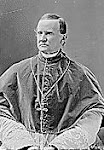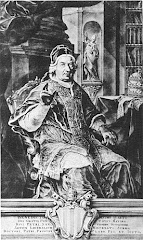"Primacy in Love": The Chair Altar of Saint Peter's in Rome

"Primacy in Love": The Chair Altar of Saint Peter's in Rome | Joseph Cardinal Ratzinger | From Images of Hope
Anyone who, after wandering through the massive nave of Saint Peter's Basilica, at last arrives at the final altar in the apse would probably expect here a triumphal depiction of Saint Peter, around whose tomb the church is built. But  nothing of the kind is the case. The figure of the Apostle does not appear among the sculptures of this altar. Instead, we stand before an empty throne that almost seems to float but is supported by the four figures of the great Church teachers of the West and the East. The muted light over the throne emanates from the window surrounded by floating angels, who conduct the rays of light downward.
nothing of the kind is the case. The figure of the Apostle does not appear among the sculptures of this altar. Instead, we stand before an empty throne that almost seems to float but is supported by the four figures of the great Church teachers of the West and the East. The muted light over the throne emanates from the window surrounded by floating angels, who conduct the rays of light downward.
What is this whole composition trying to express? What does it tell us? It seems to me that a deep analysis of the essence of the Church lies hidden here, is contained here, an analysis of the office of Peter. Let us begin with the window, with its muted colors, which both gathers in to the center and opens outward and upward. It unites the Church with creation as a whole. It signifies through the dove of the Holy Spirit that God is the actual source of all light. But it tells us also something else) the Church herself is in essence, so to speak, a window, a place of contact between the other-worldly mystery of God and our world, the place where the world is permeable to the radiance of his light. The Church is not there for herself, she is not an end, but rather a point of departure beyond herself and us. The more transparent she becomes for the other, from whom she comes and to whom she leads, the more she fulfills her true essence. Through the window of her faith God enters this world and awakens in us the longing for what is greater. The Church is the place of encounter where God meets us and we find God. It is her task to open up a world closing in on itself, to give it the light without which it would be unlivable.
Continue reading...


























No comments:
Post a Comment